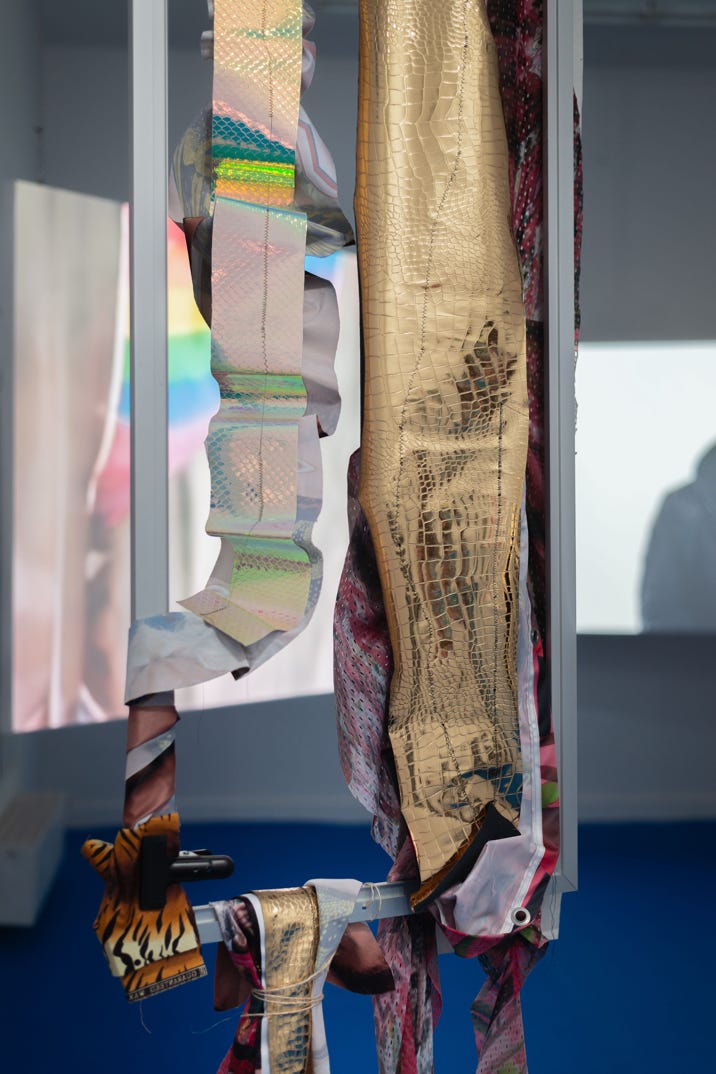






What does it mean to present different concerns together? How can a combination of different attentions, geographies and formal languages succeed? Anna Ehrenstein has developed her solo exhibition in the Remise of the Kunstverein Braunschweig in collaboration with international and local partners. It reaches far and wide, bringing together dispersed protagonists as well as activist concerns and everyday practices, videos, music, collages, and textile sculptures.
Ehrenstein’s large-scale three-channel video work Chommie – digital closet (2022–2023) is on view in the main room of the Remise. It is a collaboration between the artist and Johannesburg-based artists and LGBTIQA+ activists Brian Montshiwa and Mahube Diseko. South Africa has one of the most thriving entertainment industries in the world, with DSTV being the most widely distributed television station on the African continent. At the same time, South Africa boasts the most progressive LGBTQIA+ laws in Africa, yet queer people continue to experience discrimination on a daily basis.3 Nevertheless, a queer persona, Lasizwe, is with his Netlix series “Fake It Till You Make It” at the center of media attention; a South African spin-off of the globally successful reality TV format “RuPaul’s Drag Race” is also being discussed.4 Anna Ehrenstein spent an extended research residency in Johannesburg in 2022, working on location with Brian Montshiwa and Mahube Diseko. Together they traced the striking tension between the media’s eager consumption of queerness and the real threat to LGBTIQA+ people. The two artists and LGBTIQA+ activists performed
and filmed with Ehrenstein. Chommie – the digital closet (2022–2023) captures these experiences from the streets of Johannesburg, interspersed with South African Kwaito music.
The videos quote in parts the formal language of popular reality TV formats, in parts Ehrenstein has worked with artificial intelligence (AI). She had a new code written for “picture-to-picture AI.” The code created a database of “LGBTIQA+” and “Pride” images from the results pages of popular search engines and used them to produce new videos - an artistic reflection on the ways in which algorithmic search engine architecture now defines images for social groups, and indeed co-creates these groups and their physical-virtual realities.